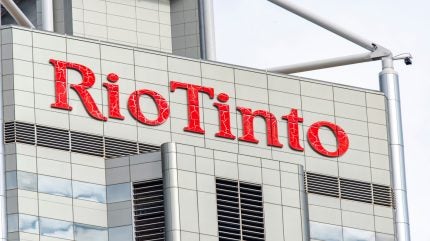
Rio Tinto’s earnings fell in the first half of 2025 (H1 2025), hit by lower commodity prices, higher capital spending and tariffs.
The mining giant’s net earnings plunged 22% to $4.53bn in H1 2025 from $5.81bn in H1 2024.

Discover B2B Marketing That Performs
Combine business intelligence and editorial excellence to reach engaged professionals across 36 leading media platforms.
Underlying earnings before interest, taxes, depreciation and amortisation (EBITDA) dropped to $11.55bn from $12.09bn, while net cash from operations dipped 1.9% to $6.92bn.
Free cash flow plummeted 31% to $1.96bn due to increased investment, with capital expenditure rising to $4.73bn from $4.02bn.
Net debt surged to $14.6bn in H1 2025, nearly triple the $5.08bn reported in the previous year.
Tariff costs hit $321m, exacerbated by US duties on Canadian aluminum rising from 25% to 50%.

US Tariffs are shifting - will you react or anticipate?
Don’t let policy changes catch you off guard. Stay proactive with real-time data and expert analysis.
By GlobalDataHowever, Rio Tinto maintained its forecast across various commodities for 2025.
Pilbara iron ore shipments are expected to be at the lower end of the guidance range due to cyclone impacts.
Bauxite production is projected to be at the higher end of the range, led by Amrun’s strong performance, copper at the higher end from Oyu Tolgoi and Escondida, and titanium dioxide slag at the lower end due to market demand.
The company is prioritising copper and lithium amid rising demand. Capital investment guidance stays at $11bn for 2025, including the Arcadium lithium project.
The effective tax rate is expected to rise to 33% in 2025 from 30%, returning to 30% in 2026. Exploration and evaluation expenses are projected to be “slightly below” the $1bn guidance for 2025.
Rio Tinto CEO Jakob Stausholm said: “Our strong cash flow enables us to maintain our practice of a 50% interim payout with a $2.4bn ordinary dividend, as we continue our disciplined investment in profitable growth while retaining a strong balance sheet.
“We are well positioned to generate value from our best-in-class project execution, together with growing demand for our products, now and over the coming decades. We remain on track to deliver strong mid-term production growth, with solid foundations in place and a diverse pipeline of options for the future.”





